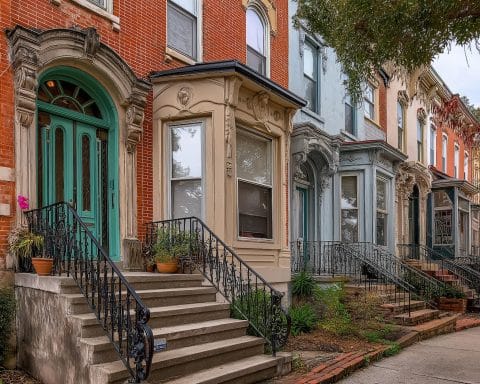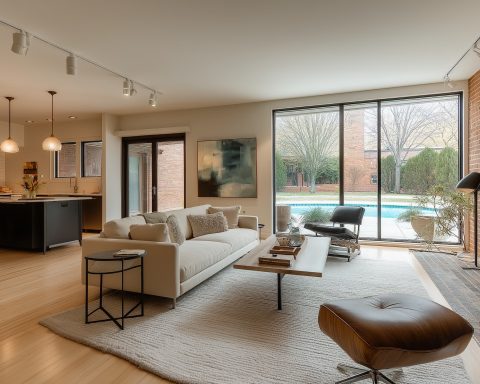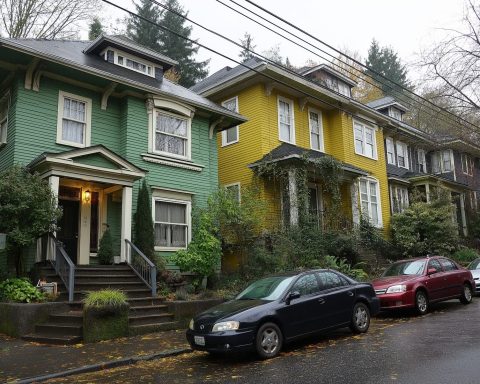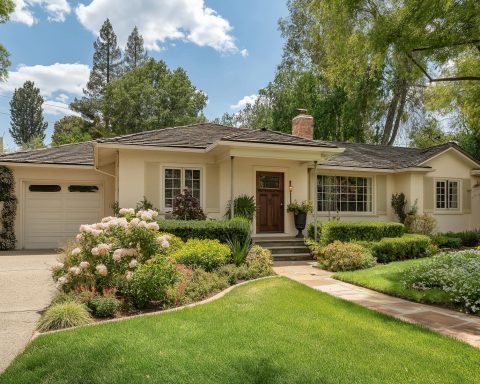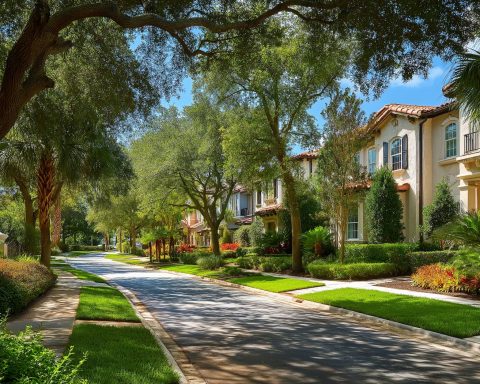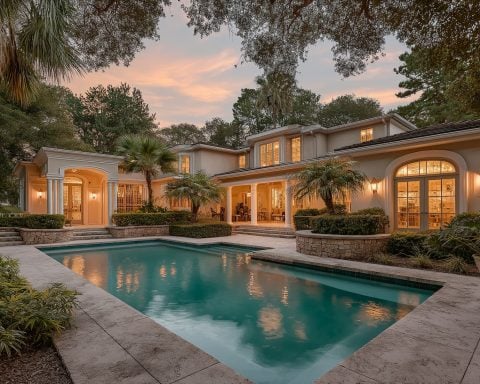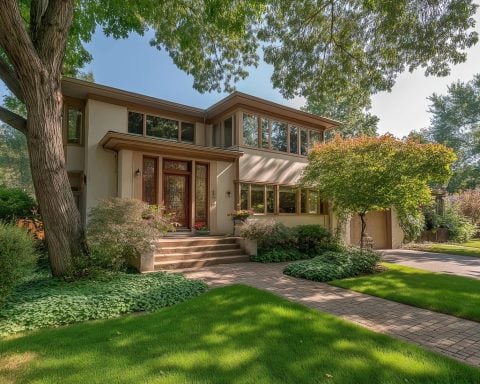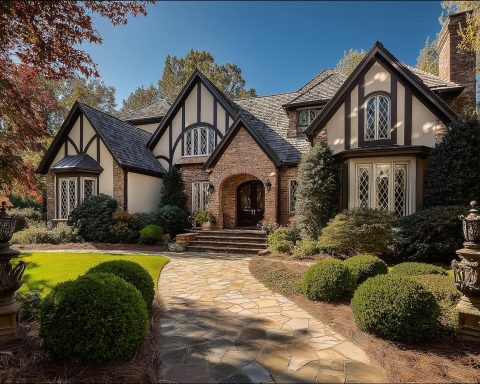Overview: Pittsburgh’s Housing Market in 2025
Pittsburgh’s housing market in 2025 is showing remarkable stability and affordability compared to many U.S. cities. After a frenzied pandemic boom and a slight cooling in 2022-2023, home prices have leveled off in 2024-2025 at historically high (for Pittsburgh) but still moderate levels. The typical home value in the city is around $240–$260K – essentially flat (±0%) year-over-year through mid-2025 zillow.com homebuyersofpittsburgh.com. This plateau follows a run-up from just over $220K in 2020 to over $240K by late 2024 homebuyersofpittsburgh.com, driven by pandemic-era bidding wars and low inventory. In July 2025, median sale prices hover near $259K (with median list prices around $273K) zillow.com. By comparison, the U.S. median list price is about $440K parealtors.org – highlighting Pittsburgh’s relative affordability. In fact, Pittsburgh is one of only three major metros where a median-income household can afford a median-priced home under the “30% of income” affordability rule parealtors.org. With a median list price of ~$249K and median household income ~$72,900, the typical mortgage payment is about 27% of income in Pittsburgh – far below the 44.6% national average parealtors.org. Local realtors note that Pittsburgh “offers not only economical investment opportunities but a high overall value,” thanks to modest living costs and a resilient economy parealtors.org.
Supply and Demand: High mortgage rates (around 6.5–7% in early 2025) have cooled buyer frenzy but also disincentivized potential sellers from giving up their ultra-low pandemic loan rates homebuyersofpittsburgh.com. This “rate lock” effect has kept housing inventory tight, even as demand remains steady. Many homeowners who refinanced at 3% are simply not listing their homes, contributing to low supply homebuyersofpittsburgh.com. As a result, Pittsburgh’s for-sale inventory remains modest – about 2,178 active listings in the city as of mid-2025 zillow.com. However, inventory has improved slightly from 2022-2023 levels. Nationwide data showed a +30.6% year-over-year jump in housing inventory by April 2025 as more sellers slowly return to the market homebuyersofpittsburgh.com, and Pittsburgh has seen a similar easing. The market is no longer as severely starved of listings as in 2021, leading to a more balanced environment in 2025. Homes are still selling briskly – median time on market is just ~10 days in the city zillow.com – but buyers are less frantic than during the COVID boom. Indeed, over 60% of Pittsburgh home sales now close below the asking price, while only ~20% sell above list homebuyersofpittsburgh.com. In January 2025, the sale-to-list ratio was 0.98 (meaning most sellers get slightly under asking), a shift from the bidding wars of 2020-2021 homebuyersofpittsburgh.com homebuyersofpittsburgh.com. This suggests that while demand is healthy, buyers have regained some negotiation power as the market normalizes.
Pricing Trends: Over the long term, Pittsburgh’s home values have trended upward at a slow, steady pace. Over the past two decades, local home prices appreciated about 4–5% annually on average – a stable clip that avoided the extreme booms and busts seen elsewhere homebuyersofpittsburgh.com. Even the pandemic price spike was relatively modest in Pittsburgh: between 2016 and 2025, median home prices rose from ~$135K to $225K, with only brief dips in 2021-2022 homebuyersofpittsburgh.com. By 2023-2024 the market largely “caught up” to its affordability ceiling, and 2025’s flat prices indicate a possible peak or plateau in the cycle homebuyersofpittsburgh.com. Realtors aren’t alarmed by this stabilization; given Pittsburgh’s historical market health, a pause in price growth may simply reflect a return to normal conditions homebuyersofpittsburgh.com. Importantly, Pittsburgh’s affordability remains a key differentiator. The median home price ($250K) is still well below the U.S. average (~$350K–$440K) homebuyersofpittsburgh.com parealtors.org, and the cost of living in Pittsburgh (housing, groceries, etc.) is below national benchmarks steadily.com. This affordability continues to attract buyers (including out-of-state remote workers seeking lower housing costs), keeping demand resilient. As a local expert summed up, “Pittsburgh stays consistently attractive and will remain economically resilient” in part because of its modest housing costs parealtors.org.
2025 Market Metrics at a Glance: To summarize the current market status, the table below highlights a few key indicators for mid-2025:
| Market Metric (City of Pittsburgh) | Value (Mid-2025) |
|---|---|
| Median Sale Price (June 2025) | ~$259,000 zillow.com |
| Median List Price (July 2025) | ~$273,000 zillow.com |
| 1-Year Price Change (Typical Home) | –0.1% (essentially flat) zillow.com |
| Active For-Sale Inventory | 2,178 homes (July 2025) zillow.com |
| New Listings per Month | ~812 (July 2025) zillow.com |
| Median Days to Pending | 10 days (fast-moving market) zillow.com |
| Sale-to-List Price Ratio | 0.997 (June 2025, ~99.7% of list) zillow.com |
| % of Sales Over List Price | 35.4% (June 2025) zillow.com |
| % of Sales Under List Price | 48.4% (June 2025) zillow.com |
| Mortgage Rate (30-year) | ~6.5–7.0% (early 2025) homebuyersofpittsburgh.com |
| Unemployment (Pittsburgh MSA) | ~4.0% (low; June 2025) macrotrends.net fred.stlouisfed.org |
Sources: Zillow Research, Realtor.com, PA Association of Realtors, WESA, YCharts/FRED data. The figures above illustrate a market that is steady and competitive, but not overheated. Days-on-market are low (homes sell in under two weeks on average), yet half of sales are under asking price – indicating that while buyers act quickly, they aren’t massively overbidding as they did in 2021. Inventory, though slowly improving, remains on the low side, which keeps upward pressure on prices (Pittsburgh had ~2,283 homes on the market as of Feb 2024, reflecting tighter supply) steadily.com steadily.com. Overall, Pittsburgh in 2025 can be characterized as a balanced market leaning slightly in sellers’ favor for desirable homes, but offering far more value for buyers than most cities. Next, we’ll dive into how different neighborhoods are faring, and where growth or opportunities are emerging across the Steel City.
Neighborhood-Level Insights: Hotspots, Gentrification, and Development
Real estate in Pittsburgh is famously local, with market conditions varying widely by neighborhood. A hallmark of Pittsburgh’s market is its diversity: one zip code might feature six-figure renovated lofts, while a nearby area still has five-figure fixer-uppers. Generally, central and East End neighborhoods have seen the strongest price growth and investment, whereas some outlying or historically disinvested areas remain very affordable. The table below (using Zillow data) highlights the vast range of median home prices across a sample of Pittsburgh neighborhoods as of early 2025:
| Neighborhood | Median Home Price (Zillow, Feb 2025) |
|---|---|
| Middle Hill (Hill District) | $96,561 homebuyersofpittsburgh.com (lower-priced, emerging) |
| Upper Hill (Hill District) | $126,392 homebuyersofpittsburgh.com (lower-priced, emerging) |
| Polish Hill | $209,248 homebuyersofpittsburgh.com (trending up, gentrifying) |
| Bloomfield | $282,040 homebuyersofpittsburgh.com (established, mid-priced) |
| North Oakland | $286,184 homebuyersofpittsburgh.com (university area, high demand) |
| Lower Lawrenceville | $328,172 homebuyersofpittsburgh.com (trendy, rapidly gentrified) |
| Central Lawrenceville | $338,255 homebuyersofpittsburgh.com (trendy, rapidly gentrified) |
| Herr’s Island (Washington’s Landing) | $670,779 homebuyersofpittsburgh.com (luxury enclave) |
Median prices from Zillow (Feb 2025) homebuyersofpittsburgh.com. These figures tell the story of Pittsburgh’s patchwork market. In historically disinvested African-American neighborhoods like the Hill District (Middle Hill, Upper Hill), median home prices are well under $150K – reflecting both lingering blight and new opportunities for investors as revitalization efforts take hold. By contrast, Lawrenceville, once a blue-collar mill neighborhood, has transformed into a hip enclave with breweries, tech startups, and soaring home prices above $300K. Lower Lawrenceville’s median ($328K) is over 3× that of nearby Middle Hill (~$97K) homebuyersofpittsburgh.com, showcasing how gentrification has created real estate micro-markets.
Gentrification & Growth Areas: Several Pittsburgh neighborhoods have experienced rapid change and appreciation in the 2010s and 2020s. Lawrenceville (Upper, Lower, Central) is a prime example – its artistic vibe and influx of restaurants and tech offices (e.g. Autodesk, Robert Bosch, etc.) have driven housing demand sky-high. Lawrenceville’s resurgence, along with adjacent Bloomfield and Garfield, has been fueled by young professionals and investors renovating old rowhomes. Likewise, East Liberty and Garfield saw major redevelopment over the past decade (including a new Target, Google’s offices at Bakery Square, and luxury apartments), pushing prices up and changing the socio-economic makeup. The city has responded to such trends with inclusionary zoning overlays in these high-growth areas to preserve some affordable units. For instance, new developments of 20+ units in Lawrenceville, Bloomfield, Polish Hill (and now Oakland) must set aside 10% of units for moderate-income renters prohousingpgh.org policypoliticalreview.com. This policy, made permanent in 2021 and expanded citywide in 2022-2023, aims to balance revitalization with affordability amid Pittsburgh’s “gentrification corridors.”
Hot Neighborhoods & New Developments: Beyond the East End, other pockets of the city are drawing attention:
- Downtown Pittsburgh (Golden Triangle): Long just a 9-to-5 office hub, downtown is slowly turning into a livable neighborhood. Since 2019, several office buildings have been converted or newly built as apartments/condos, adding over 4,000 residential units. This increased supply means the historic “downtown rent premium” has shrunk (premium fell from 30% in 2014 to 19% by 2024) brookings.edu, making downtown living more attainable. With many offices still underused (downtown’s office vacancy hit ~16% by late 2024) brookings.edu, city leaders are aggressively courting residential conversions brookings.edu. The result: Downtown is gradually gaining residents, amenities, and a 24/7 vibe. Investors see potential in repurposing old high-rises into apartments – a trend likely to continue through the 2020s as Pittsburgh “right-sizes” its office footprint. (One caveat: the largest, outdated office towers are hardest to convert, yet they account for a disproportionate share of vacancies brookings.edu, posing a redevelopment challenge.)
- Oakland (North, South, Central): Home to Pitt and Carnegie Mellon, Oakland remains red hot for both housing and commercial development. Proximity to universities and UPMC hospitals guarantees a steady stream of renters (students, medical staff), keeping occupancy high. South Oakland, with its dense student housing, offers investors strong rental yields, while North Oakland’s beautiful homes (~$300K median homebuyersofpittsburgh.com) attract faculty and young professionals. The universities themselves are investing in new dorms and facilities, and private developers are adding mid-rise apartments targeted at students. Oakland’s growth has even raised affordability concerns, prompting inclusionary zoning requirements for new projects here as well prohousingpgh.org. Overall, expect Oakland to continue densifying – it’s essentially Pittsburgh’s “eds & meds” city within the city.
- The Strip District and Uptown: The Strip District (between downtown and Lawrenceville) is booming with mixed-use developments. Old warehouses have turned into trendy lofts, food halls, tech offices (Autonomous vehicle firms and robotics startups dot the Strip), and boutique hotels. New condo buildings now punctuate the skyline along the Allegheny River. Similarly, the Uptown area (between Downtown and Oakland) is seeing development interest due to the new Bus Rapid Transit (BRT) line planned through the corridor. Both areas offer proximity to downtown jobs and are targets of Pittsburgh’s tech-driven growth, making them investment hotbeds heading into the late 2020s.
- Neighborhoods to Watch: Some previously overlooked neighborhoods are emerging as investment frontiers due to their affordability and location. Carrick (south Pittsburgh) and Brookline offer single-family homes under $150K–$200K and are attracting first-time buyers and landlords seeking value ark7.com ark7.com. Brighton Heights on the North Side provides a “suburban feel” in city limits and has become popular with families, which is lifting its housing demand ark7.com. Mount Washington, known for its skyline views, continues to draw high-end homebuyers and Airbnb investors (properties on the hilltop with panoramic vistas remain desirable despite the niche market) ark7.com. And Bloomfield/Shadyside in the East End, while already pricier, are consistently in demand for their walkability and amenities – these areas see stable appreciation and are considered among the city’s most “safe bet” neighborhoods for long-term value ark7.com ark7.com.
In summary, Pittsburgh’s neighborhood landscape is one of contrasts: thriving pockets of redevelopment alongside affordable areas ripe for growth. This dynamic presents both opportunities and challenges – opportunities for investors to revitalize aging housing in undervalued districts, and challenges for the city to ensure that revitalization remains inclusive. The next section will examine the economic and demographic forces driving these neighborhood trends and the overall market.
Key Economic & Demographic Drivers
Several fundamental factors are underpinning Pittsburgh’s real estate market performance in 2025 and will shape its trajectory through the late 2020s. These include the region’s economic evolution (from steel to “eds and meds” and tech), population and income trends, and infrastructure developments.
Diversified Economy (“Eds, Meds, and Tech”): Pittsburgh’s economy has transformed from its Rust Belt past into a diversified mix led by health care, education, and technology. Healthcare giant UPMC and university systems (University of Pittsburgh, Carnegie Mellon, Duquesne, etc.) collectively employ tens of thousands and draw a constant influx of professionals and students. In fact, 22% of the region’s workers are in education or health sectors (vs 15% nationwide) brookings.edu, providing a stable employment base that buoyed housing demand even during downturns. The presence of multiple colleges also means built-in rental demand – every fall, a new cohort of students and staff seek housing, keeping vacancy low in areas like Oakland and Shadyside.
At the same time, Pittsburgh has emerged as a surprising tech hub. Nicknamed “Roboburgh,” the city is a leader in robotics, AI, and autonomous vehicle R&D, thanks largely to CMU’s world-class computer science program. Tech firms and startups (Google, Amazon, Facebook/Oculus, Duolingo, Argo AI/Aurora, Uber’s ATG-now-Motional, etc.) have opened offices or born locally, creating high-paying jobs. While Pittsburgh’s tech sector is smaller than Silicon Valley or Austin, it punches above its weight. A noteworthy example: language-learning company Duolingo not only made Pittsburgh its HQ but even put up billboards in San Francisco to lure talent to the Steel City brookings.edu. This “brain gain” of young tech workers and entrepreneurs has spurred luxury apartment construction in neighborhoods like East Liberty, Oakland, and the Strip District to accommodate them. It’s also driven the rehab of cool urban neighborhoods (e.g. Lawrenceville for startup offices and employee housing). The tech influx, combined with Pittsburgh’s affordability advantage, has attracted some remote tech workers to relocate from pricier cities, further boosting housing demand.
Jobs and Income Trends: The overall job market in Pittsburgh is healthy in 2025. Unemployment in the metro hovers around 4% macrotrends.net fred.stlouisfed.org, near multi-decade lows. Even as some sectors (like traditional manufacturing) have declined, growth in health care, education, finance (PNC Bank is headquartered here brookings.edu), and tech has kept the labor market strong. Notably, after the pandemic, Pittsburgh’s economy rebounded well; by mid-2024 the region was adding jobs and wages were rising. The median household income in 2025 is estimated around $72K (metro) parealtors.org, up significantly from previous years. Rising incomes combined with low housing costs mean local buyers have greater purchasing power than in many cities. As mentioned, Pittsburgh is one of the few metros where median-income families can comfortably afford the median home parealtors.org, which supports a sustainable homeownership rate and steady demand.
However, one challenge is a shrinking labor force – regional population declines (more on that next) led to ~11,000 fewer workers in May 2025 vs a year prior wesa.fm. Fewer workers could constrain housing demand in the long run if not offset by new migration. The bright side is Pittsburgh’s relative economic stability acts as a buffer in recessions. The city’s job market is less volatile than tech-centric cities or tourism-heavy economies. For instance, even if a national recession hits in 2025-2026 (a possibility some forecasters raise homebuyersofpittsburgh.com), Pittsburgh’s housing may be insulated by its steady eds-and-meds employment base. Historically, local housing prices have been less boom-bust partly for this reason homebuyersofpittsburgh.com.
Population & Demographic Shifts: Pittsburgh’s demographic story is nuanced. The city proper lost population for decades, bottoming out around 300K in 2020 (less than half its 1950 peak) brookings.edu. The long decline was due to suburbanization and steel’s collapse, but recent trends are more hopeful. From 2020 to 2024, the City of Pittsburgh’s population actually grew slightly – new estimates show the city added a few thousand residents, reaching ~307,000 by 2024 wesa.fm. This ~1% annual growth is modest, but it marks one of the biggest population increases in decades for the city axios.com wesa.fm. The metro area (2.43 million) has been roughly stable, inching up +0.47% from 2024 to 2025 macrotrends.net. Forecasts predict the city will hit ~310,000 by 2030 nchstats.com. These gains, while small, indicate Pittsburgh may have turned a corner in attracting and retaining residents – thanks in part to the vibrant economy and relative affordability for young families and remote workers.
Demographically, Pittsburgh is getting younger and more diverse at the margins. Historically known for its older population, the city’s median age has fallen to about 33.5 as of 2023 datacommons.org, reflecting the influx of students and young professionals. Neighborhoods like East Liberty, Lawrenceville, and the North Side have seen an increase in 20- and 30-somethings moving in (often from out of town). At the same time, the region still has a large cohort of aging Baby Boomers. Over the next 5-10 years, many will be looking to downsize or relocate (some to warmer climates), which could free up housing inventory – especially in suburban areas – or increase demand for senior housing. In fact, a national Fannie Mae study projects that from 2026–2036, roughly 13–14 million Americans over 65 will exit homeownership (by selling or leaving their homes) realwealth.com. Pittsburgh, with its older demographics, may feel this trend acutely. It represents a double-edged sword: opportunities for younger buyers to purchase homes as seniors sell, but also a potential headwind to price appreciation if a wave of listings hits the market late in the decade.
Infrastructure and Development Projects: Lastly, key infrastructure improvements are boosting Pittsburgh’s real estate prospects. The most high-profile is the Pittsburgh International Airport modernization – a new $1.4 billion terminal slated to open by late 2025 will enhance the region’s connectivity and travel experience hdrinc.com pittsburghmagazine.com. A state-of-the-art airport can make Pittsburgh more attractive for businesses and conventions, indirectly supporting the commercial real estate and hospitality sectors (and by extension, housing for employees in those industries). In the urban core, a Bus Rapid Transit (BRT) line linking Downtown, Uptown, Oakland, and East Liberty is underway. This improved transit could spur transit-oriented development along its route and raise property values in transit-connected neighborhoods. Additionally, Pittsburgh is implementing a citywide Comprehensive Plan (the first in its history, launched in 2023) to guide growth and land use over the next decade wesa.fm. Urban planners and community leaders are optimistic this will provide a “road map” for balanced development, infrastructure upgrades, and zoning reforms to accommodate natural growth wesa.fm. For investors, a more predictable planning environment is a positive sign – it may streamline projects and identify new areas ripe for development.
In summary, Pittsburgh’s housing outlook is bolstered by a solid economic foundation (eds, meds, tech), gradually positive demographic momentum, and strategic investments in infrastructure. These drivers suggest that the city can sustain and even build upon its recent real estate strength. Of course, broader forces like interest rates and national policy also play a role – which we will discuss later. But first, let’s review what experts predict for Pittsburgh’s housing market from now through the end of the 2020s.
Forecasts and Market Outlook Through the Late 2020s
Short-Term (2025-2026): Housing analysts generally foresee moderate growth, not a bust, for both the national and Pittsburgh housing markets in the next couple of years. After the roller coaster of 2020-2022 (when U.S. home prices soared ~40% then briefly dipped), the consensus is that price growth will normalize to low single digits annually realwealth.com realwealth.com. Fannie Mae’s survey of 100+ economists, for example, predicts U.S. home values will rise about 3.8% in 2025 and 3.6% in 2026 realwealth.com – a far cry from the 15-20% surges of the boom, but still above inflation. CoreLogic similarly forecasts ~4.1% growth nationally from end of 2024 to end of 2025 realwealth.com. For Pittsburgh specifically, expectations are upbeat albeit modest. Local experts note that inventory constraints in Allegheny County are keeping prices on an upward trajectory steadily.com. In early 2024, Zillow had projected Pittsburgh home values would rise ~1.1% by spring 2024 steadily.com, and indeed by mid-2025 prices are slightly up from a year ago (or flat, depending on data source) – essentially tracking that slow growth. Looking forward, high affordability gives Pittsburgh room for appreciation: since buyers here are not as stretched financially as in expensive cities, a gradual increase in prices of ~2–4% per year is sustainable without causing an affordability crisis.
Several forecasts signal that Pittsburgh might modestly outperform the national average in the near term. One reason is that smaller, affordable markets in the Midwest/Northeast are expected to see relatively stronger demand than overheated Sun Belt markets. A RealPage Analytics model for apartment rents, for instance, projects Pittsburgh to be one of only two major metros (along with San Jose) to see >4% rent growth in 2025-2026, whereas many Sun Belt cities will see far lower growth or even declines realpage.com. This reflects Pittsburgh’s lack of overbuilding and solid demand. On the home price side, RealWealth’s analysis suggests some affordable metros could experience slightly higher appreciation (>5% annually) than the 3-4% national norm realwealth.com. While they don’t name cities, Pittsburgh’s profile fits – it’s a relatively low-cost, high-yield market that didn’t overinflate, so it has more runway for growth.
Crucially, no major authority is predicting a price crash for Pittsburgh. Unlike certain frothy markets (where 20% corrections were feared post-pandemic), Pittsburgh’s steady fundamentals make a sharp decline unlikely barring an external shock. Local realtors confirm there are “no explicit indications of an upcoming housing market crash in Pittsburgh” steadily.com. Even if the U.S. entered a mild recession, Pittsburgh’s housing might simply plateau or see minor dips in select segments, rather than a collapse. The one scenario that could cause a softening is a substantial increase in supply – but given the construction headwinds (more on that below) and continued hesitation of existing owners to sell, an oversupply scenario appears remote in the mid-2020s.
Mid-Term (2027-2030): Looking further out, forecasts naturally become hazier. However, several trends provide hints for Pittsburgh’s late-2020s housing outlook:
- Continued Modest Appreciation: The prevailing view is “slow and steady” growth. By 2030, home values in Pittsburgh will likely be higher than today, but not dramatically so. If prices grew ~3% annually, a $250K home in 2025 might be on the order of $290–300K by 2030. This cumulates to roughly a 17% total increase over 5 years – in line with some national projections (e.g. one model sees +17% nationally from 2024 to 2029) realwealth.com. Importantly, this pace would be slightly above inflation, meaning real price growth but not a bubble. It also aligns with Pittsburgh’s 4-5% historical annual gains homebuyersofpittsburgh.com. Some years could be a bit higher (especially if mortgage rates drop and unleash pent-up demand), others a bit lower, but overall a gentle upward trajectory is anticipated. By the late 2020s, Pittsburgh housing should remain affordable relative to incomes – perhaps still the most affordable of major metros – maintaining its status as an attractive market for both locals and out-of-state buyers parealtors.org parealtors.org.
- Housing Supply Gradually Loosening: One wild card is housing supply. Nationwide, new construction has been below household formation for years, but that may change. In Pittsburgh, if population growth stays mild, the current tight supply could ease. Two factors might increase inventory: new home construction and Boomer turnover. On construction, experts note a divergence: multi-family building is expected to slow by 2025-2026 (due to high costs and oversupply fears in some regions) realwealth.com, whereas single-family homebuilding might pick up by 2026 as interest rates stabilize realwealth.com. In Pittsburgh, multi-family completions are relatively limited (only a few hundred new units downtown, for example brookings.edu), so oversupply of rentals is not a big concern. Single-family development is constrained by geography and lot availability in the city, but suburban Pittsburgh might see an uptick in new subdivisions later in the decade if demand holds. As for existing homes, the expected wave of Baby Boomer sales (as mentioned earlier) post-2025 could finally bring more listings to market. If by 2028-2030 Pittsburgh has an influx of homes for sale (from retirees downsizing or estates selling off properties), that could temper price growth and give buyers more choices. Essentially, the late 2020s might shift to a more balanced or even buyer-favorable market as inventory improves – a change from the seller-leaning dynamics of the early 2020s. This scenario is speculative but plausible given demographic trends realwealth.com.
- Rental Market Strength: The rental market is expected to stay robust through the 2020s. High mortgage rates and home prices nationally are keeping many would-be buyers in the rental market longer, and Pittsburgh is no exception. Industry predictions call for strong rental demand through 2029, albeit with moderate rent growth due to supply additions realwealth.com realwealth.com. In Pittsburgh’s case, rent increases have already outpaced home price growth recently (since prices flattened). As discussed in the next section, Pittsburgh rents are forecast to rise a few percent per year. By 2030, the city’s median rent could be materially higher than today, though still relatively affordable compared to coastal cities. The late 2020s may also see single-family rentals (SFRs) gain popularity here, as they have nationally – investors converting more Pittsburgh houses into rentals to meet demand from families who rent. With Pittsburgh’s high rental yields, this could be a notable trend (more institutional interest in Pittsburgh real estate portfolios, for instance).
- External Factors: Of course, any long-term outlook must acknowledge uncertainties. By 2030, factors like the general U.S. economy, interest rate environment, and government policy will influence Pittsburgh’s market. For instance, if inflation is tamed and 30-year mortgage rates slip back into the 5% range later in the decade (as some forecasts hint realwealth.com realwealth.com), Pittsburgh could experience a mini boom in homebuying, pushing prices up faster for a time. Conversely, if there are economic headwinds – say a significant recession or local job losses (perhaps if automation reduces eds/meds employment or a major company leaves) – demand could soften. Another factor is whether Pittsburgh can attract a net influx of residents (e.g. climate migrants escaping hotter regions, or remote workers seeking affordability). Some analysts speculate that the 2020s could see “rust belt renaissance” cities like Pittsburgh gain population as climate change and high costs make parts of the South/West less attractive. If Pittsburgh were to unexpectedly surge in population growth, housing demand and prices would accordingly accelerate. While this is not the baseline forecast, it’s an upside risk worth noting.
Bottom Line: The best guess outlook through 2030 is that Pittsburgh’s real estate market will grow steadily but unspectacularly – a continuation of its historical trend of slow appreciation. It likely won’t make headlines for skyrocketing prices, but it will remain a stable, affordable market with opportunities for gradual equity gains. As one real estate report put it, “we’re not looking at a boom or a bust, but a slow and steady rise in home values” over the next five years realwealth.com. For homeowners, this means building equity at a healthy pace; for buyers, it means Pittsburgh should stay within reach, avoiding the extreme unaffordability seen elsewhere. And for investors, moderate appreciation combined with strong rent fundamentals (next section) makes Pittsburgh an appealing long-term play.
Rental Market Trends: Rents, Yields, and Vacancy
Pittsburgh is a majority-renter city – about 53% of households rent rather than own point2homes.com – so the rental market is a critical part of the real estate picture. As of 2025, that market is characterized by high demand, low vacancies, and gradually rising rents, yet overall rent levels remain relatively affordable (especially compared to coastal cities). Here’s a closer look at the key trends:
Rents and Recent Changes: The average apartment rent in Pittsburgh has been creeping upward, but at a controlled rate. As of mid-2025, the median monthly rent in the Pittsburgh metro stands around $1,777 (for all unit types) point2homes.com point2homes.com. This represents roughly a +1.2% increase year-over-year point2homes.com. To put this in perspective, rents in mid-2024 were about $1,755, so they’ve risen only slightly in the past 12 months point2homes.com point2homes.com. Pittsburgh’s rent growth has been modest recently, and actually below the inflation rate – indicating landlords have limited ability to push rents too fast, likely due to the city’s ample (though not excessive) housing stock and tenant price sensitivity. It’s worth noting that Pittsburgh’s median rent has now surpassed the U.S. median rent (which is around $1,754 as of mid-2025) point2homes.com. Back in 2019, Pittsburgh rents were well below national averages, but steady increases – especially a jump in 2021-2022 – closed the gap. For example, between November 2022 and July 2025, Pittsburgh’s median rent rose from $1,638 to $1,777, overtaking the national median which went from $1,710 to $1,754 in the same period point2homes.com point2homes.com. This suggests Pittsburgh is no longer a bargain in terms of rents, though it’s still far cheaper than markets like NYC or SF.
Drilling down, rents vary by location and property type. New luxury apartments in Downtown, Oakland or East Liberty command top dollar (2-bedroom units often $2,000+). In contrast, older units in neighborhoods like Carrick or Garfield can rent for under $1,000. According to data, about 35% of rentals in Pittsburgh are priced between $1,000–$1,500 per month (the largest segment), and roughly 34% are under $1,000 point2homes.com. Only a small share (~6%) are luxury rentals above $2,500 point2homes.com. This distribution shows that while upscale development is happening, the city still has a large stock of low-to-mid range rentals, which helps keep the overall median rent moderate.
Vacancy and Occupancy: Pittsburgh’s rental vacancy rate is quite low, reflecting strong occupancy. The latest Census/ACS figures put the vacancy rate around 5–6% mjempirecapital.com point2homes.com. Point2Homes data shows a 5.5% rental vacancy for the city point2homes.com. This is generally considered a healthy rate, indicating a tight market but not an extreme shortage. For context, a 5% rental vacancy is lower than the national average (which has been around 6-7% in recent years) and signals that most landlords can fill units without much delay. Indeed, RealPage reported that as of early 2025, Pittsburgh’s apartment occupancy was among the highest in large metros, and it projected occupancy to remain solid as new supply is limited realpage.com. The majority-renter status of the city (only ~47% of residents are homeowners brookings.edu) means there’s a deep pool of renters to keep vacancy low. Even Downtown, despite adding units, has seen robust leasing – the downtown residential occupancy has increased as more people embrace city living (helped by the new supply lowering costs downtown) brookings.edu.
Rental Affordability: From a tenant perspective, Pittsburgh is relatively affordable, but there are challenges at the lower end. A Brookings study noted that 47% of rental units in the city are affordable to households earning 50% of area median income (AMI) brookings.edu – which is a positive statistic few cities can claim. This means nearly half of rentals are within reach for lower-income renters, thanks to the prevalence of older, inexpensive units. However, the city still faces an affordable housing gap for its poorest residents. A 2022 housing needs assessment found Pittsburgh is short by about 8,000 units for extremely low-income renters (those earning well below 50% AMI) wesa.fm. Mayor Ed Gainey’s administration has invested federal funds (ARPA dollars) into affordable housing, resulting in about 800 new affordable units built or in pipeline wesa.fm. But high construction costs and limited subsidies make it hard to produce low-rent units at scale wesa.fm wesa.fm. So while the median renter is doing okay (median renter income is ~$42K point2homes.com, which makes the $1,200-$1,300 effective average rent affordable at ~30% income), those at the bottom of the income distribution struggle. Renters who can’t afford market rents often end up cost-burdened or in substandard housing. Pittsburgh’s public housing waitlists and inclusionary zoning initiatives are attempts to address this. Overall, though, compared to many cities, renters in Pittsburgh get decent bang for their buck – large units in safe neighborhoods can be found for well under $1,500, which is increasingly rare nationally.
Investor Perspective – Rental Yields: For real estate investors, Pittsburgh’s rental market is attractive because of its high rental yields. The combination of moderate home prices and relatively strong rents means cap rates (rental return on property value) are above average here. A quick example: a typical $240K house that can rent for ~$1,800/month grosses ~$21,600/year, which is ~9% of the property value – far above yields in markets like NYC (2-3%) or LA (3-4%). Even accounting for expenses, investors can often achieve 6-8% net returns on Pittsburgh rentals, making it a favored market for cash-flow investors ark7.com ark7.com. This dynamic has led to growing interest from out-of-state buyers and even institutional investors in Pittsburgh’s single-family rental space. Neighborhoods with lower prices and solid rental demand – e.g. Carrick, where median prices are ~$150K and rents still strong – are noted as particularly “profitable rental properties” steadily.com steadily.com. Similarly, areas near universities ensure a steady tenant pipeline (student rentals in Oakland, for instance, are goldmines when managed well). The Ark7 investment guide highlights that Pittsburgh’s “strong market for rental properties” is a key reason investors are flocking to the city ark7.com. High student and young professional populations mean landlords rarely lack for tenants.
Rent Forecast: Looking ahead, rents are expected to keep rising modestly. Multiple forecasts point to Pittsburgh being in the upper tier of rent growth among U.S. cities in 2025 and 2026. RealPage Analytics predicts effective rents in Pittsburgh will climb around 3.5–4.0% in 2025 (one of only a few large markets above 3% growth) realpage.com. In fact, RealPage’s Q2 2025 update projected Pittsburgh as #1 or #2 in rent growth over the next year, with >4% rent increases expected (versus a national average ~2.3%) realpage.com. The rationale: Pittsburgh hasn’t seen the glut of new apartments that places like Austin or Phoenix have, so supply isn’t keeping up with demand, allowing landlords to raise rents a bit faster realwealth.com. That said, rent growth here will likely remain moderate, not explosive – perhaps in the 2-4% per year range through the late 2020s. Oversupply isn’t a big risk, but tenant affordability will cap how far rents can go. Real estate experts note that a flood of new construction nationally is tempering rent hikes; even in Pittsburgh, new luxury buildings add competition at the high end. RealPage expects U.S. rent growth to average ~2.3% in 2025 realpage.com and remain slow in many big cities, whereas Pittsburgh might eke out gains at the higher end of the spectrum (3-4% in stronger years) realpage.com realwealth.com. By 2030, if rents grew ~3% annually, the median might be ~$2,100 – still quite manageable relative to incomes at that time.
Vacancy Outlook: Vacancy rates might rise slightly if more rentals come on line (through conversions or new builds). But any increase would be from very low levels to just moderate. For instance, downtown’s aggressive addition of apartments has pushed the downtown vacancy premium down (rentals got leased up, reducing the incentive premium for living downtown from 30% to 19%) brookings.edu. Citywide, unless there’s a big economic downturn, it’s hard to see vacancy climbing above, say, 7-8% – Pittsburgh just doesn’t have the construction pipeline that Sun Belt cities do. In fact, as mentioned, there’s concern Pittsburgh might not be building enough to meet future demand (especially if population surprises to the upside). Therefore, landlords can be reasonably confident that occupancy will stay high. Even with an aging population, many older Pittsburghers rent (e.g. downsizing from houses to apartments), so demand spans age groups.
In summary, Pittsburgh’s rental market is landlord-friendly right now – low vacancies, decent rent increases, and great yields – yet it remains tenant-friendly compared to high-cost cities, with many affordable options and rent growth that isn’t outpacing wage growth. This balance is part of Pittsburgh’s appeal. Renters are attracted by the value they get (often larger or better-quality units for the price), and investors are attracted by the cash flow potential. Provided the city continues to manage growth and encourage housing development (market-rate and affordable), the rental sector should remain a pillar of the overall real estate market through the 2020s.
Investment Opportunities and Risks (Residential & Commercial)
For real estate investors, Pittsburgh offers a compelling mix of upside potential and relatively low risk, but it’s not without its challenges. Below we outline some key opportunities as well as risks in both the residential and commercial sectors:
🔑 Opportunities in Residential Real Estate:
- Affordable Entry Prices, Steady Appreciation: Pittsburgh’s low housing prices mean investors can acquire properties at a fraction of the cost of other major metros. With median home values around $250K and many neighborhoods well below that, it’s feasible to build a portfolio of rentals or flips with modest capital. Over time, these properties have shown consistent appreciation (~4-5%/yr) homebuyersofpittsburgh.com. While you might not double your money overnight, Pittsburgh real estate has a track record of stable value growth plus the bonus of high rental income. This stability is appealing to investors seeking dependable returns rather than speculative gains. As one analysis put it, “Pittsburgh offers affordability coupled with appreciation potential,” striking a sweet spot for investors ark7.com.
- High Cash Flow and Rental Yields: As discussed, Pittsburgh boasts excellent rent-to-price ratios. Investing here can generate immediate positive cash flow. Properties in neighborhoods like Brookline, Carrick, or Brighton Heights can often be bought under $150K and rented for $1,200+, yielding strong returns. Even pricier areas can work: a Lawrenceville rehab might cost $350K but could fetch high rents on platforms like Airbnb or to young professional tenants. Single-family rentals (SFR) in the region are increasingly popular, and Pittsburgh has been cited among markets where SFRs and small multi-units “outperform” due to steady tenant demand realwealth.com. For investors focused on income, Pittsburgh is hard to beat among large cities. You’re effectively getting yields akin to what some Midwestern small towns provide, but in a city with diverse economy and tenant pool.
- Value-Add and Flip Potential: Many Pittsburgh homes are older (a large share built before 1940), presenting value-add opportunities. Neighborhoods in transition – e.g. Garfield, Allentown, Troy Hill – have solid housing stock that can be bought cheaply, renovated, and either flipped or rented at higher rates. Investors who can modernize century-old homes in up-and-coming areas have been reaping profits. For example, renovating a drab $100K rowhouse in Polish Hill (median ~$209K homebuyersofpittsburgh.com) could yield resale values significantly higher given the neighborhood’s desirability among young buyers. Additionally, historic properties are abundant and sometimes undervalued – Victorian houses in Manchester or Deutschtown, for instance, can be restored for niche markets (B&Bs, luxury rentals). Pittsburgh’s rich architectural heritage offers creative investors a chance to “flip with character.”
- Neighborhoods in Renaissance: As detailed earlier, several neighborhoods are on a clear upward trajectory. Downtown’s residential revival is an opportunity in itself – investors are converting obsolete offices to apartments or buying into new condo developments at attractive prices (relative to other downtowns). If Pittsburgh succeeds in making Downtown a thriving mixed-use neighborhood by 2030, early investors could see substantial appreciation. East Liberty and the Strip District are other examples: both saw major new developments (retail, offices, condos) and have become “lifestyle” districts, driving property values up. But there’s still runway – vacant lots and buildings remain, and the city is supportive of redevelopment here. Areas adjacent to the hot spots (e.g. Larimer next to East Liberty, or Lower Hill/Uptown near Downtown) are still somewhat undervalued and could be the next frontier if spillover growth occurs.
- Student Housing and Short-Term Rentals: Pittsburgh’s large student population (over 100,000 college students across multiple universities) ensures perpetual demand for rentals near campuses. Savvy investors are buying properties in South Oakland, Squirrel Hill, Bloomfield, etc., and renting by the bedroom to students – often yielding more than a single lease. Purpose-built student housing is also in short supply, so private landlords fill the gap. On another front, Pittsburgh’s tourism and medical visitation have grown, opening a niche for short-term rentals (Airbnb). Areas like Mount Washington (for its view) and Lawrenceville/Strip (for their trendy scene) are popular Airbnb locales. Regulations are relatively lenient currently, so hosts can generate high nightly rates. However, one should watch for any future city regulations on short-term rentals (none major as of 2025).
- Commercial-Residential Conversions: The struggles in the office market (detailed below) ironically present a residential investment opportunity: converting commercial buildings to housing. Pittsburgh’s dated office inventory (most buildings >40 years old) brookings.edu, coupled with rising vacancies (downtown ~16% and climbing) brookings.edu, mean many structures are ripe for repurposing. The city and state have shown willingness to support conversions (through tax incentives or grants), as reusing offices can simultaneously address downtown’s vacancy and add housing supply. Real estate developers eyeing Pittsburgh could pick up older office towers at a discount and transform them into apartments or mixed-use complexes. There have been several such conversions already (e.g. the Union Trust Building partially, the Roosevelt building to apartments, etc.), and more are expected. For investors with the capital to take on large projects, Pittsburgh is seen as a “strong fit for conversion activity” due to its older building stock and demand for more downtown living brookings.edu.
⚠️ Risks and Challenges:
- Slow Population Growth: While population declines have abated, Pittsburgh’s growth is still minimal. A flat or shrinking population over the long term can limit housing demand. The metro’s slight recent uptick could reverse if economic opportunities don’t keep pace or if young graduates continue to leave for bigger cities. Investors must be mindful that Pittsburgh is not a boomtown in terms of people – it’s more about replacement demand and internal migration than waves of newcomers. If demand were to stagnate, rental vacancies could rise and home price appreciation could stall. So far, the city’s affordability has attracted enough migrants to offset natural population loss, but this balance needs to continue. In essence, the biggest risk is demand stagnation – a risk smaller in Pittsburgh than in truly shrinking areas, but still present given its history.
- Economic Transitions and Job Market Risks: Pittsburgh’s diversified economy is a strength, but each sector carries some risk. The healthcare and education fields are relatively stable, but they depend on public funding, Medicare rates, and enrollment trends – any budget crunch in Harrisburg or D.C. that hits eds and meds could ripple to the housing market (fewer new hires, etc.). The tech sector, while growing, is still developing; it’s not guaranteed to reach the critical mass of Silicon Valley or even Austin. There have been setbacks – for example, autonomous vehicle firm Argo AI, which was heavily present in Pittsburgh, shut down in 2022 (though many employees were absorbed by other companies). If the nascent tech boom falters or fails to produce more “Duolingos,” the anticipated housing demand from tech workers might be overestimated. Additionally, Pittsburgh’s energy sector (fracking in the Marcellus Shale, etc.) and finance sector (PNC Bank) are areas to watch – energy is volatile with commodity prices, and banking is sensitive to interest rates and economic cycles. A downturn in any major employer or sector could modestly weaken the housing market (though probably not tank it, due to diversification).
- Aging Housing Stock & Infrastructure: Many properties in Pittsburgh are old and may require significant maintenance or updates. Investors might face higher capex costs for things like replacing ancient plumbing, old roofs, or mitigating lead paint in older homes. These expenses can eat into profits if not anticipated. Similarly, some of Pittsburgh’s public infrastructure (roads, bridges, water lines) is aging – occasional bridge closures or water main issues are a reminder (the 2022 Fern Hollow Bridge collapse was a notable event). While infrastructure is being addressed (with federal funds and city focus), potential localized issues could impact certain neighborhoods or lead to special assessments/taxes.
- Property Taxes and Regulations: Pennsylvania’s property taxes can be on the higher side, and Allegheny County is no exception. Investors need to factor in that property assessments may rise (especially if you improve a property significantly or after a purchase). The county’s millage isn’t extreme, but combined city/school taxes mean effective rates around 2.2% of market value in the city. On a $300K property, that’s ~$6,600/year in taxes, which is material. Additionally, there are some quirks: Pittsburgh has a 1% local wage tax for residents, and for landlords, a Rental Registration requirement (the city has been implementing a rental registration and inspection ordinance, though it faced legal challenges). If Pittsburgh pushes more stringent rental licensing and inspections, that could add compliance costs. Zoning red tape is another complaint – developers note that Pittsburgh’s permitting and zoning approvals can be slow and unpredictable wesa.fm wesa.fm. This can delay projects and increase carrying costs (“time is risk, and risk is money” as one developer said wesa.fm). The city is working on a one-stop permitting process to streamline this wesa.fm, but progress is incremental. Investors should be prepared for some bureaucratic friction, especially on larger developments.
- Commercial Real Estate Woes (Office Market): On the commercial side, the biggest risk/opportunity is the office sector downturn. Pittsburgh’s office vacancy has climbed into the 20%+ range metro-wide (and mid-teens downtown) brookings.edu, and office rents have fallen ~15% in real terms since 2019. This is largely due to remote work and corporate downsizing – a national trend that Pittsburgh hasn’t escaped. The risk here is downtown’s vitality and city finances. Already, lower office property assessments caused a ~$3.3 million drop in annual tax revenue for the city brookings.edu. If offices remain half-empty, downtown businesses suffer (hurting retail real estate) and building owners may struggle to pay loans (potential defaults). The opportunity is converting or repurposing these assets, but not all offices are easily convertible (some large floor-plate towers are tricky) brookings.edu. Investors in downtown commercial real estate must be cautious – values for Class B/C office buildings have likely not hit bottom yet. On the flip side, industrial and warehouse properties in the region remain fairly strong (the rise of e-commerce and Pittsburgh’s logistical location have kept industrial vacancies low and rents stable). Retail is mixed – suburban retail centers are doing alright, but downtown retail depends on office foot traffic which is down.
- Interest Rates and Financing Costs: The spike in interest rates since 2022 has made financing deals more expensive. While Pittsburgh’s cash flow can offset some of this, highly leveraged investors might find it tougher to make the numbers work at a 7% mortgage versus 3% a couple years ago. Some development projects have been paused due to high construction financing costs. If rates stay elevated longer than expected, it could dampen some investment activity or put pressure on property values (higher cap rates). The consensus is rates will slowly ease by 2025-2026 homebuyersofpittsburgh.com realwealth.com, but there’s no guarantee. Prudent investors are underwriting deals at conservative interest assumptions and perhaps favoring fixed-rate loans to hedge risk. Inflation in construction costs is another related risk – as noted earlier, building materials and labor have surged in price, making new developments pricier and even some renovations costlier than budgeted wesa.fm. That could squeeze margins or make certain projects unfeasible unless rents/prices also rise.
In conclusion, Pittsburgh presents a favorable environment for real estate investment, especially for those seeking income and long-term growth rather than quick speculation. The city’s strengths – affordability, diverse economy, educated population, improving infrastructure – position it well for the coming years. But investors should remain mindful of the structural challenges like slow population growth, an evolving post-industrial economy, and the overhang in the office market. By choosing the right neighborhood and strategy (e.g. focusing on rentals or value-add in growth areas), and by planning for higher carrying costs (interest, taxes, maintenance), one can mitigate these risks. As Pittsburgh continues its 21st-century renaissance, those who invest thoughtfully in the Steel City could find it a very rewarding play.
Impact of Interest Rates, Inflation, and Housing Policy
Wider economic forces and government policies have a significant influence on Pittsburgh’s housing outlook. In the current environment, high interest rates, persistent inflation, and evolving housing policies are all factors to watch:
Interest Rates: Perhaps the most immediate macro influence is the trajectory of mortgage rates. The Federal Reserve’s rate hikes in 2022-2023 pushed 30-year mortgage rates from ~3% to around 7% at peak in 2024 homebuyersofpittsburgh.com – levels not seen in two decades. This sharp rise reverberated through Pittsburgh’s market by cooling buyer demand and slowing price growth, as affordability for buyers eroded. It also contributed to the inventory crunch (homeowners with 3% loans are reluctant to sell and buy a new home at 7%). Looking ahead, most analysts anticipate gradual relief in interest rates by late 2024 into 2025. The Pittsburgh Post-Gazette noted that “most financial institutions and analysts” predict rates will gradually decrease through 2025 post-gazette.com. Realtor.com’s mid-2025 forecast expects mortgage rates to “edge lower in the back half of 2025” as inflation moderates realtor.com. Similarly, the Pennsylvania Association of Realtors suggests we might not see a big drop immediately, but rates could dip into the high-5% or low-6% range by late 2025 or 2026 homebuyersofpittsburgh.com.
For Pittsburgh, even a 1% reduction in mortgage rates would materially improve affordability (potentially expanding the buyer pool and allowing prices to climb modestly without raising monthly payments). For example, at 7% a $200K loan costs ~$1,330/month (PI only), whereas at 6% it’s ~$1,200 – a meaningful difference for entry-level buyers. Therefore, if/when rates ease, Pittsburgh’s market may heat back up as sidelined first-time buyers jump in. Conversely, if rates stay higher for longer, Pittsburgh could see continued sluggish sales volume and flat prices, though its high affordability buffer means it fared better than expensive cities in the high-rate environment. Importantly, any rate changes also affect investors: higher rates raise borrowing costs for mortgages and development loans, which can slow down new construction and acquisitions. We’ve already seen that locally: some builders pulled back when rates and construction costs soared, contributing to the low inventory. If rates drop, builders may become more confident to start projects, which could gradually improve supply by late this decade.
Inflation and Construction Costs: The surge of inflation in 2021-2023 (at one point over 8% nationally) has had multiple impacts on housing. On one hand, inflation in incomes and rents can support higher home values. On the other hand, construction inflation has made building and renovating much more expensive. In Pittsburgh, developers of affordable housing pointed out that federal Low-Income Housing Tax Credits (LIHTC) now cover much less of a project’s cost than before due to inflated construction expenses wesa.fm. As a result, there’s a larger “gap” that must be filled with local funds or the project is downsized. One expert noted, “Because inflation and construction costs have continued rising, it’s gotten harder to fund affordable housing, even as the need increases” wesa.fm. This dynamic isn’t limited to affordable projects – market-rate builders face it too. A new single-family home that might have cost $300K to build pre-pandemic could cost, say, $350K+ now given lumber, labor, and land price increases. Higher costs mean higher sale prices or else builders can’t profit, which in turn can price some buyers out. So inflation has contributed to the affordability challenge despite Pittsburgh’s moderate home prices.
Looking forward, inflation has cooled but not disappeared (the Fed’s preferred measure is still ~3-4% annual in mid-2025). If inflation persists above wage growth, that could strain consumers and limit how much home prices or rents can rise. There’s a hopeful sign: the Personal Consumption Expenditures index was down to ~2.3% y/y in May 2025 realpage.com, near the Fed’s target, but recent tariffs (the U.S. imposed some new tariffs in early 2025) might add inflationary pressure in coming months realpage.com realpage.com. Local experts fear these tariffs could give cover for building materials suppliers to raise prices again wesa.fm, which would be a setback for construction costs. The Fed’s stance has shifted to a wait-and-see, but they’re prepared to keep rates higher if inflation doesn’t convincingly settle at 2% realpage.com realpage.com. For Pittsburgh housing, the ideal scenario is moderate inflation with gradually falling interest rates – that would mean input costs stabilize, consumers feel confident, and borrowing gets cheaper. A worst-case would be stagflation (high inflation, high rates) which would stagnate both construction and buyer activity. Most likely, we’ll see a middle ground: inflation slowly easing, some relief on rates, and thus a better climate for housing by 2026.
National Housing Policy and Local Impacts: Federal and state housing policies also play a role in Pittsburgh’s market health, particularly for affordability and development.
- Housing Supply Initiatives: At the national level, there’s recognition of a housing shortage and discussions of policies to spur building (e.g. incentives for local zoning reform, funding for affordable housing in infrastructure bills). While no sweeping federal housing bill has passed as of 2025, smaller moves (like increased Fannie/Freddie loan limits, or HUD grants for affordable housing) can trickle down to Pittsburgh. The Realtor.com report suggested encouraging new-home construction, especially at affordable price ranges, to relieve price pressures parealtors.org. Pittsburgh could benefit from any federal push that helps finance new developments or rehab vacant homes, given the city has vacant land and an older housing stock. Locally, Pittsburgh is working on its first Comprehensive Plan which may modernize zoning to allow more housing density where needed wesa.fm, and the state of Pennsylvania has programs like PHARE (housing affordability fund) that have directed money to Pittsburgh projects. These policy efforts aim to address supply gaps by 2030 so that housing costs remain in check.
- Affordability and Rental Policies: On the state level, Pennsylvania currently prohibits rent control (so Pittsburgh cannot enact it). Instead, the focus has been on inclusionary zoning and affordable housing trust funds. The city’s Inclusionary Zoning (IZ) policy, as mentioned, now covers multiple neighborhoods and likely will expand – requiring private developers to include affordable units in larger projects prohousingpgh.org. This policy can slightly slow or complicate development (some developers oppose it, and a builders association even legally challenged it alleghenyinstitute.org), but it also creates opportunities (some developers get density bonuses or subsidies in exchange for IZ units). Meanwhile, Pittsburgh’s Urban Redevelopment Authority (URA) has utilized federal ARPA funds and local trust funds to subsidize affordable housing construction (e.g. a $35 million investment under Mayor Gainey wesa.fm wesa.fm). These local policy actions attempt to ensure that as the market grows, lower-income residents aren’t left behind. For investors, IZ means you have to be aware of requirements if building in certain zones, and overall it could slightly reduce the pure profit potential of new luxury developments (but maintains broader market health by preventing displacement).
- Taxes and Incentives: National tax policy, like the future of the 1031 exchange or capital gains rates, can influence real estate investment flows. While nothing specific is slated to change at this moment, it’s something to watch. Locally, Pittsburgh offers some incentives such as the LERTA program (tax abatement for improvements in certain areas) to encourage development. If extended or expanded, such incentives could spur more renovation of aging properties. On the flip side, the city’s fiscal health (exiting Act 47 in 2018 after years of state oversight) means it will be cautious but possibly creative in finding revenue – a risk is that if budgets get tight, real estate taxes or fees could rise. However, major tax changes likely require state approval, and none are imminent.
In essence, macro policy trends currently favor housing stability: the Fed is aiming for a soft landing (lower inflation, eventually lower rates), federal rhetoric supports more housing supply, and local policies in Pittsburgh are geared toward sustainable growth and inclusion. Should these policies succeed, Pittsburgh could see an environment of moderate interest rates, controlled inflation, and support for housing development by the late 2020s – which would be very positive for the market.
Conversely, investors and homeowners should keep an eye on potential headwinds: if inflation surprises to the upside, or if political changes lead to cuts in housing funds (for instance, a future administration reducing HUD budgets or LIHTC capacity, as was feared in past years wesa.fm), that could constrain the housing sector. Additionally, if there were any significant federal housing interventions (e.g. a new first-time buyer tax credit or down payment assistance program), Pittsburgh could see a surge of buyers entering the market, which might drive up competition and prices suddenly. It’s a reminder that national policies (or lack thereof) can quickly alter local market dynamics.
To conclude this section, Pittsburgh’s real estate fortunes will continue to be intertwined with interest rate movements, inflation trends, and housing-related policies. The city’s inherent affordability gives it a cushion – for example, even with 6-7% mortgage rates, homes are selling (albeit slower), whereas some expensive markets froze entirely. Inflation’s bite has been felt in construction, but Pittsburgh’s overall cost of living remains below average, allowing residents to better weather price increases parealtors.org steadily.com. And on policy, Pittsburgh is proactively trying to guide its housing market toward equitable growth. If one phrase could summarize the outlook it’s perhaps “cautious optimism”: optimism that rates and inflation will improve and that policy support will continue, but caution because these factors are outside any one city’s control. Stakeholders in Pittsburgh’s housing sector are thus keeping one eye on the Federal Reserve and Washington D.C., even as they focus on the local fundamentals that have kept the Steel City’s real estate market steadily rolling forward into 2025 and beyond.
Sources:
- Pennsylvania Association of Realtors – Affordability Study, July 2025 parealtors.org parealtors.org
- Homebuyers of Pittsburgh – 2025 Housing Trends and Zillow Home Values homebuyersofpittsburgh.com homebuyersofpittsburgh.com
- Zillow Research – Pittsburgh Market Overview, July 2025 zillow.com zillow.com
- RealPage Analytics – Rent Growth Forecasts (2025) realpage.com realpage.com
- WESA 90.5 (NPR) – Housing and Development News, 2024-2025 wesa.fm wesa.fm
- Brookings Institution – Report on Downtown Pittsburgh Conversions, 2024 brookings.edu brookings.edu
- Pittsburgh Post-Gazette – Real Estate Market Coverage, 2025 post-gazette.com (via archive)
- RealWealth Network – Housing Market Predictions 2025-2029 realwealth.com realwealth.com
- Point2Homes – Pittsburgh Rental Market Stats 2025 point2homes.com point2homes.com
- (Additional citations within text as labeled)


